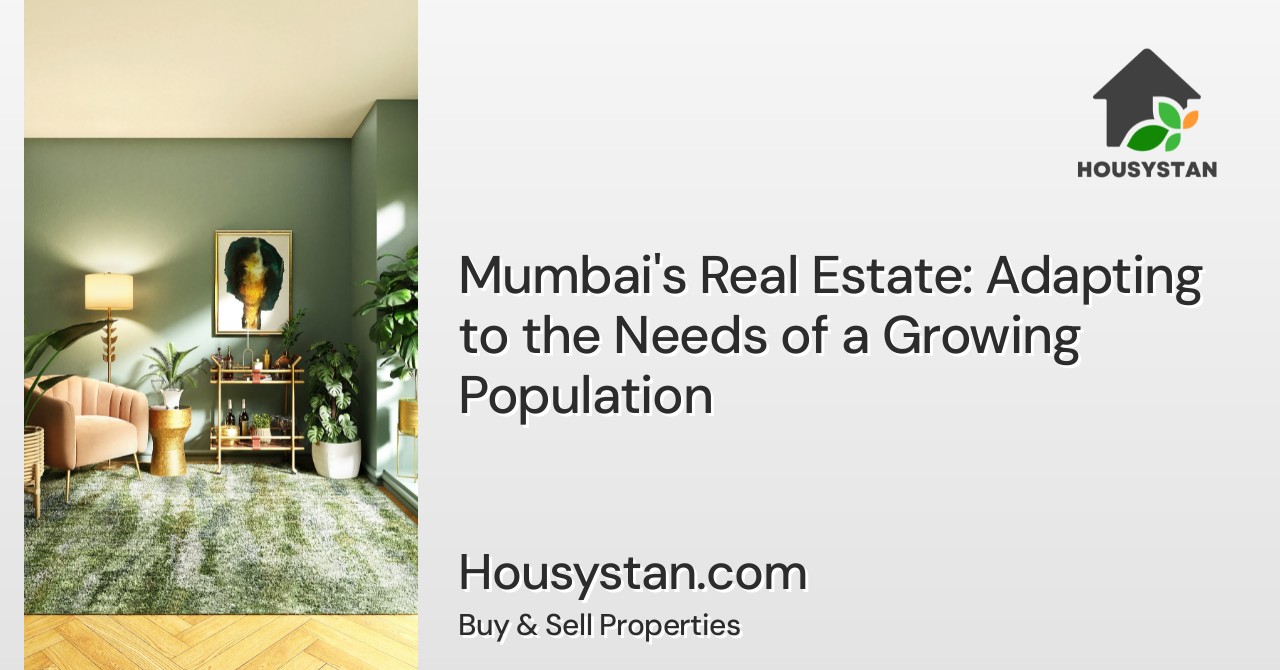Mumbai's Real Estate: Adapting to the Needs of a Growing Population
Read latest blogs and articles from Housystan

The Information mentioned here was last updated on:
11/12/2025Mumbai's Real Estate: Adapting to the Needs of a Growing Population
Mumbai, often called the financial capital of India, is a vibrant metropolis where dreams take shape. With a population that consistently rises each year, the city's real estate landscape is undergoing rapid transformation. Developers, urban planners, and government authorities are all striving to create solutions that address the housing demand, lifestyle preferences, and infrastructural necessities of a growing urban population.
One prominent trend in Mumbai’s property market is the increasing focus on high-rise residential towers and mixed-use developments. Scarcity of land in prime locations has encouraged builders to optimize vertical spaces, offering modern amenities and efficient layouts. Residents now seek homes that provide security, connectivity, and access to essential services, all within close proximity. This shift is visible in areas like Powai, Thane, and Navi Mumbai, where new townships and gated communities are redefining urban living.
- Verified Tenants/Buyers
- Unlimited Property Listing
- Zero subscription/charges fee
Infrastructure advancements have played a crucial role in shaping Mumbai’s real estate sector. Projects such as the Mumbai Metro, Coastal Road, and Eastern Freeway are significantly improving connectivity, making suburban locations more attractive for both homebuyers and investors. Improved transportation not only reduces commute times but also increases property values in previously overlooked neighborhoods.
Affordability remains a key concern, especially for the middle-class segment. To tackle this challenge, developers are introducing compact apartments and affordable housing schemes under the Pradhan Mantri Awas Yojana (PMAY). These initiatives aim to bridge the gap between demand and supply, making homeownership accessible to a wider audience. Localities like Dombivli, Kalyan, and Vasai-Virar are emerging as hotspots for budget-friendly housing options, further diversifying the city’s property market.
Additionally, sustainable construction practices are gaining momentum. Eco-friendly materials, energy-efficient designs, and green building certifications are becoming standard features in new projects. This not only aligns with global environmental trends but also meets the expectations of environmentally-conscious buyers in Mumbai.
In summary, Mumbai’s real estate sector is continuously evolving to accommodate the city’s expanding population. Strategic planning, innovative design, infrastructure upgrades, and a focus on affordability are shaping a dynamic housing market that is well-equipped to meet the needs of present and future residents. As Mumbai continues to grow, its property landscape will remain at the forefront of India’s urban development story.